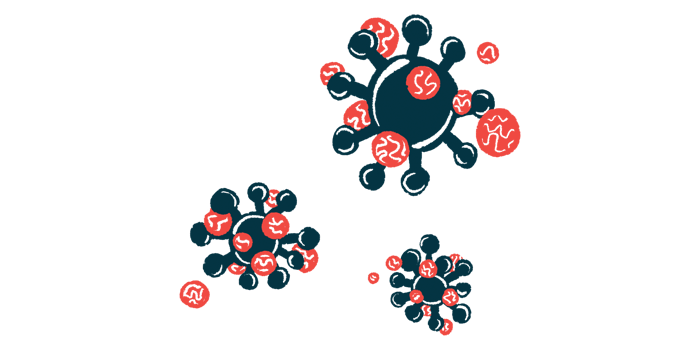COVID-19 tied to positive direct Coombs test, not cold agglutinins
Findings support how rare cases of CAD secondary to COVID-19 are
Written by |

About one in five people infected with the virus that causes COVID-19 test positive on a direct Coombs test, which indicates their red blood cells may be covered with antibodies like those that cause cold agglutinin disease (CAD), a small study reports.
Those antibodies, called cold agglutinins, weren’t detected in any of the evaluated COVID-19 patients with the positive Coombs test, however.
While cases of CAD secondary to COVID-19 infection have been reported, these findings further support that they are rare. Still, the researchers did find that having a positive direct Coombs test was linked to more complications in COVID-19 patients.
The study, “Alterations of erythropoiesis in Covid-19 patients: prevalence of positive Coombs tests and iron metabolism,” was published in Therapeutic Advances in Hematology.
What are cold agglutinins?
CAD is a type of autoimmune hemolytic anemia (AIHA), a group of rare conditions that occur when the immune system wrongly attacks and destroys red blood cells, leading to anemia. Anemia refers to lower than normal levels of red blood cells or hemoglobin, the protein that carries oxygen in these cells.
In CAD, this attack is driven by cold agglutinins, a type of self-reactive antibody that binds to red blood cells at low temperatures, causing them to clump together and be marked for destruction, or hemolysis.
Most cold agglutinins are of a class of antibodies called IgM, which are normally produced by the immune system in response to a threat. The complement cascade, a part of the immune system, also contributes to cold agglutinin-driven hemolysis.
As such, a direct Coombs test is used to help confirm a CAD diagnosis. It assesses whether antibodies and/or complement proteins are attached to a patient’s red blood cells.
The test doesn’t identify the type of antibody, however, and another test is needed to detect cold agglutinin levels by measuring their ability to cause red blood cell clumping at low temperatures.
Viruses can sometimes trigger autoimmune hemolytic anemia, and there have been reports of CAD secondary to COVID-19 infection and vaccination. In these cases, hemolysis is usually resolved once the infection is treated.
How common is CAD secondary to COVID-19?
Here, researchers in Belgium sought to determine how common it is for people infected with SARS-CoV-2 — the virus that causes COVID-19 — to test positive on a direct Coombs test and develop AIHA, particularly CAD.
The study included 179 adults infected with SARS-CoV-2 during the second wave, in the last third of 2020. Their mean age was 66.4 and most (72.1%) were men. A total of 36 (20.3%) tested positive for the first time on a Coombs test after their COVID-19 diagnosis.
Most (91.7%) of those with a positive test had IgG — not IgM — antibodies attached to their red blood cells. In AIHA, IgGs are associated with hemolysis at warm temperatures. Only two patients (5.6%) had trace amounts of cold agglutinins. None of the patients with a positive direct Coombs test showed signs of hemolysis, however, rejecting the presence of AIHA.
Still, the patients with a positive test had significantly lower mean levels of hemoglobin, indicating more severe anemia, than those who tested negative. They were also about three times more likely to have received a blood transfusion (39.5% vs. 11.3%) and the median number of units transfused was significantly higher than in the patients with a negative test.
Those testing positive in the direct Coombs test were more often transferred to an intensive care unit (ICU) for complications (60.5% vs. 41.8%), stayed in the hospital a median 13 days longer (25 vs. 12 days), and required mechanical ventilation to help with breathing a median 15 days longer (26 vs. 11 days).
“Our results show more anemia in Covid-19 patients with a positive DCT [direct Coombs test] associated with a more severe form of the disease, but without clinical hemolysis,” the researchers wrote.
Anemia in COVID-19
To zero in on the cause of anemia in COVID-19, the researchers determined the levels of iron and related molecules in 52 of these patients and 12 other patients who’d been infected with SARS-CoV-2 and had blood samples stored in a biobank.
Iron is needed for hemoglobin, but its levels are affected in anemia of inflammation, wherein long-lasting inflammation affects the body’s ability to use iron to make enough red blood cells.
The researchers found that the levels of certain iron-related molecules significantly differed between patients with versus those without a positive direct Coombs test. “The pattern of anemia was consistent with … anemia of inflammation,” the researchers wrote, with signs of compensatory iron-related mechanisms.
Also, the levels of hemoglobin, along with those of a marker of inflammation, were significantly associated with levels of iron-related molecules, which were, in turn, linked to more COVID-19 complications.
“We could not find a correlation between COVID-19 and cold agglutinin hemolytic anemia and such cases remain quite rare. However, there were more complications in patients with a positive DCT,” wrote the researchers, who said long-term studies of a larger population would help reinforce their results and “integrate them into clinical practice.”




